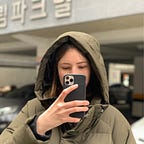Target audience
At this point we had played around with certain directions for the project, but had not paid defining a target audience enough attention. We begun the project thinking we wanted to target those who travel abroad out of necessity but end up struggling to learn the language of the country they’re in (even after years of living there). However it was difficult to find relevant secondary research, and focusing on this group would mean the additional consideration of differences between adult and younger learners. We decided to stray away from this target, and try to focus more on the visual side of our project — target those who consider themselves visual learners.
This was still much too vague, and came with its own set of problems: for example, wouldn’t most people benefit from visual context, not just visual learners? And what defines a visual learner? These were questions we would consider and research going forward.
Questionnaire
To help us reduce assumptions in decision-making, I created a short questionnaire (synthesised above). I asked basic questions to get a better idea of popular language learning methods, what they would change about their process, whether their study method included pictures or videos, and what points of the process they found useful, or not. Finally, I asked them to rank in order of importance what (out of pictures, videos, example sentences, audio and speaking) they find the most helpful.
We were able to find that the most popular learning methods were classes, studying alone with a textbook, and using apps and websites. Classes were preferred because they allowed for conversation practice, however a lot depended on the teacher.
The majority of people said that having context of interest increases their motivation to learn, and that visual data helped them learn and understand. Most also noted that visual & audio materials are the most engaging, and better at helping information retention. For the full set of results, view figure 2 below.
There were a few comments that noted there being a lack of freedom in study material organisation & customisation, which we found interesting
Finally, as shown in figure 3, speaking and practicing was considered most important, closely followed by audio, with videos being the least helpful.
Final comments
We begun the project passionate about focusing on visual context and how this helps learn vocabulary specifically, but this needed to be grounded in a group of people to whom this might benefit. We all acknowledged that this needs to be addressed quickly so we decided to come back to it again with more secondary research.
>>> For my next post on the project, click here.
